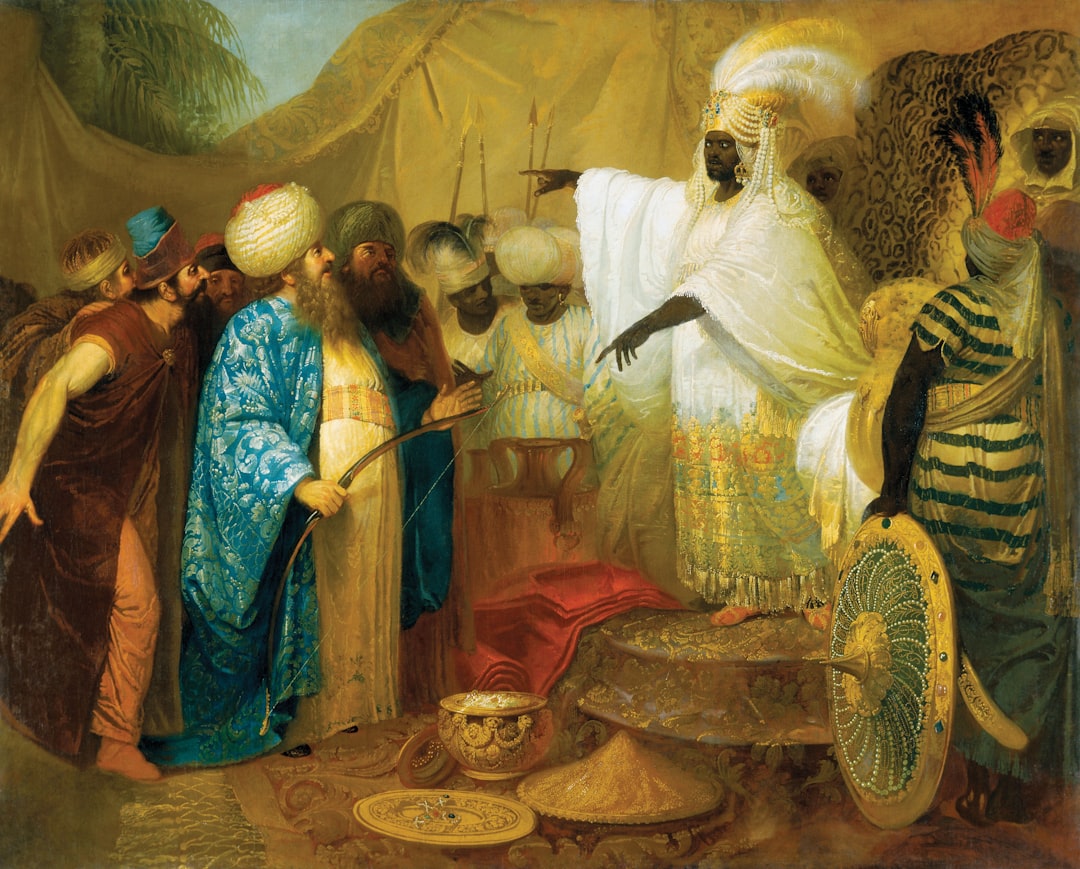From the formal chahar-bāghs of medieval palaces to the lush metaphors of Sufi poetry, the garden (bāgh) occupies a central place in Persian culture. It is at once an earthly delight, a cosmic microcosm, and a symbol of spiritual aspiration. In this post, we’ll wander through the classical texts—epic, panegyric, and mystical—to discover how nature’s green realms shaped the Persian literary imagination.
1. The Qur’anic Seed: Paradise as a Garden
In the Qur’an, jannah (paradise) is painted as an eternal garden with flowing rivers, fragrant trees, and fruit that never fades. This celestial prototype inspired Persian poets to see every well-tended bāgh as a tiny reflection of the divine realm—a place where justice, beauty, and abundance converge.
“Gardens beneath which rivers flow,
where every fruit is ripe and every tree in bloom.”
2. Epic Foundations: The Shāhnāmeh’s Green Thrones
Ferdowsī’s Shāhnāmeh often sets royal councils and decisive encounters beneath the shade of plane trees and in the courts of pleasure gardens. Kings like Jamshīd and Kai Kavus are described receiving ambassadors amid fountains and flowerbeds—an image of sovereign power harmonized with nature’s order. The garden, here, is both stage and symbol: a throne of green signifying the ruler’s mandate to maintain cosmic balance.
3. Courtly Panegyrics: Bouquets of Praise
Court poets perfected the art of the “garden qasīda,” in which every couplet evokes a different flower, scent, or babbling stream:
-
Farrukhī Sīrjānī likens his patron’s virtues to “roses that blush at dawn.”
-
‘Ubayd Zakānī wove entire metaphors around the flight of the nightingale through cypress groves.
These verses did more than adorn a ruler’s reputation; they reinforced shared cultural ideals: hospitality, refinement, and the artful cultivation of both land and society.
4. Sufi Allegory: The Heart as Garden
Sufi writers transformed the physical bāgh into an inner landscape. In Rūmī’s Mathnawī, the “garden of the heart” must be weeded of ego and watered by spiritual practice to yield the flowers of love and knowledge. The beloved’s face becomes the “sun” that coaxes roses to bloom, while thorns serve as reminders of the trials on the mystical path.
“Enter your own garden, O heart, and uproot
all but the rose that blooms for union’s sake.”
Ibn ʿArabī extends the metaphor: the cosmos itself is a divine garden, where every creature and every star is a flower in the Beloved’s bouquet.
5. Architectural Splendor: The Chahar-Bāgh Plan
Realizing paradise on earth, Persian architects devised the chahar-bāgh (“four-garden”) layout—four rectangular quarters divided by water channels, symbolizing the four rivers of paradise. Royal complexes from the Ālī Qāpū in Isfahan to Humayun’s Tomb in Delhi bear its stamp. The interplay of water, shade, and breeze not only cools the body but also enlivens the senses—an immersive poem in brick, stone, and foliage.
6. Miniatures and Metaphor: Painted Paradises
Persian miniaturists captured garden scenes in exquisite detail: slender columns of smoke from incense burners, playful gazelles peering through roses, and courtly banquets under pergolas of vine. Each illustration amplifies the text’s metaphors and invites the viewer to lose themselves in a seamless blend of art, nature, and narrative.
7. Enduring Legacy: From Mughal Terraces to Urban Parks
The classical Persian garden travels far beyond Iran’s borders—to the Mughal terraces of Lahore, the landscaped pavilions of Ottoman Istanbul, and even modern urban parks seeking respite from concrete. Contemporary Iranian landscape architects still draw on chahar-bāgh principles, adapting ancient symbolism to 21st-century life.
8. Conclusion: Cultivating Inner and Outer Beauty
Whether in Ferdowsī’s epic lines, a Sufi’s whispered prayer, or the sight of a moss-dappled fountain, the Persian garden reminds us that beauty and harmony are works of human care aligned with nature’s gifts. By meditating on its images—roses, cypresses, flowing streams—we inherit an ancient wisdom: that true paradise is a cultivated balance of earth, heart, and heaven.
“Plant a garden in your soul, and paradise will bloom within.”
May we, too, tend our inner gardens with devotion, that the fragrance of our lives might echo those classical visions of paradise on earth.





